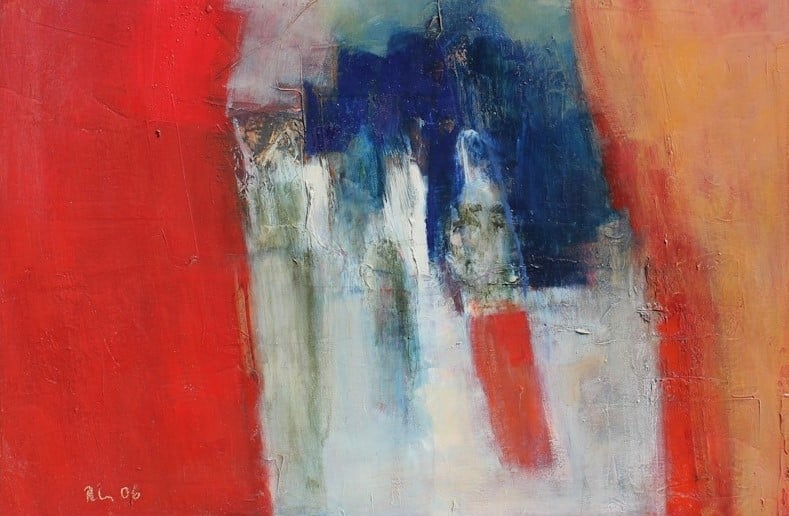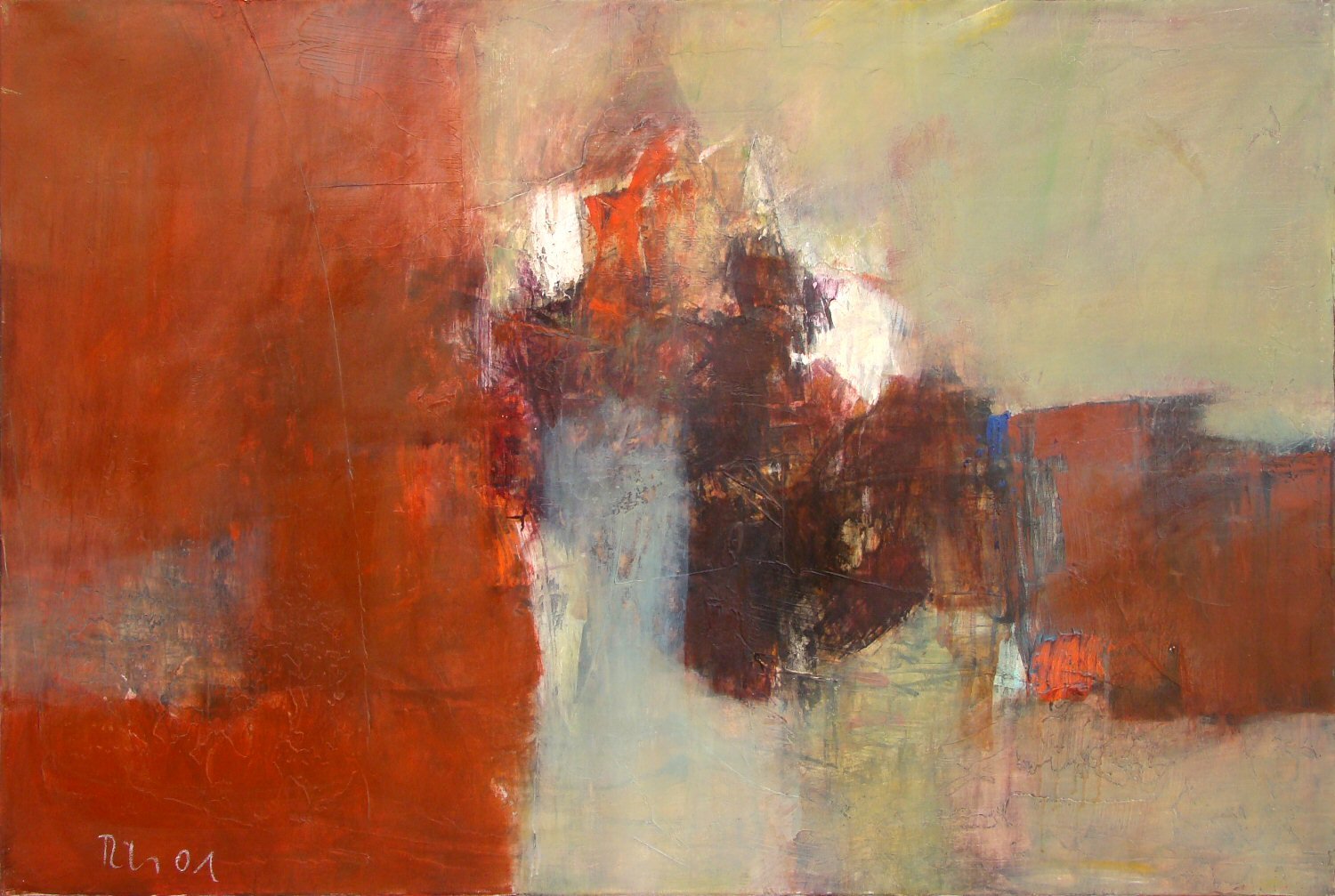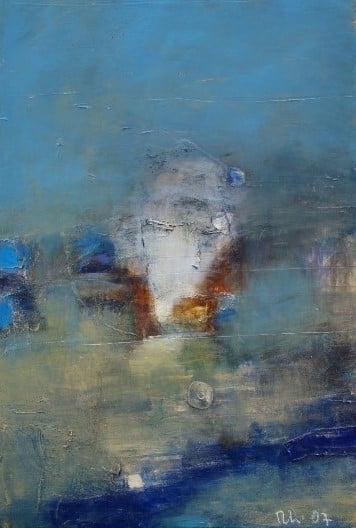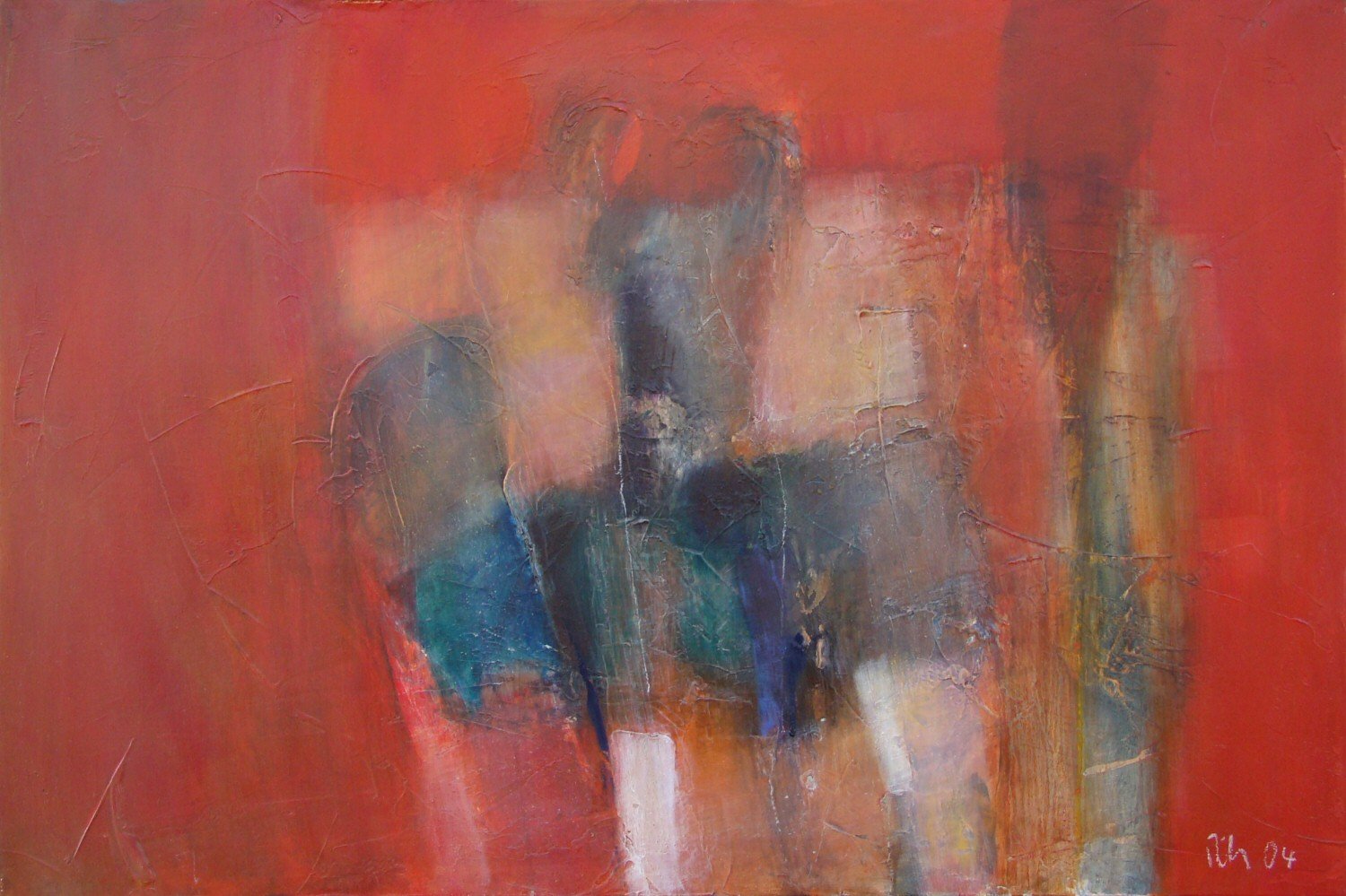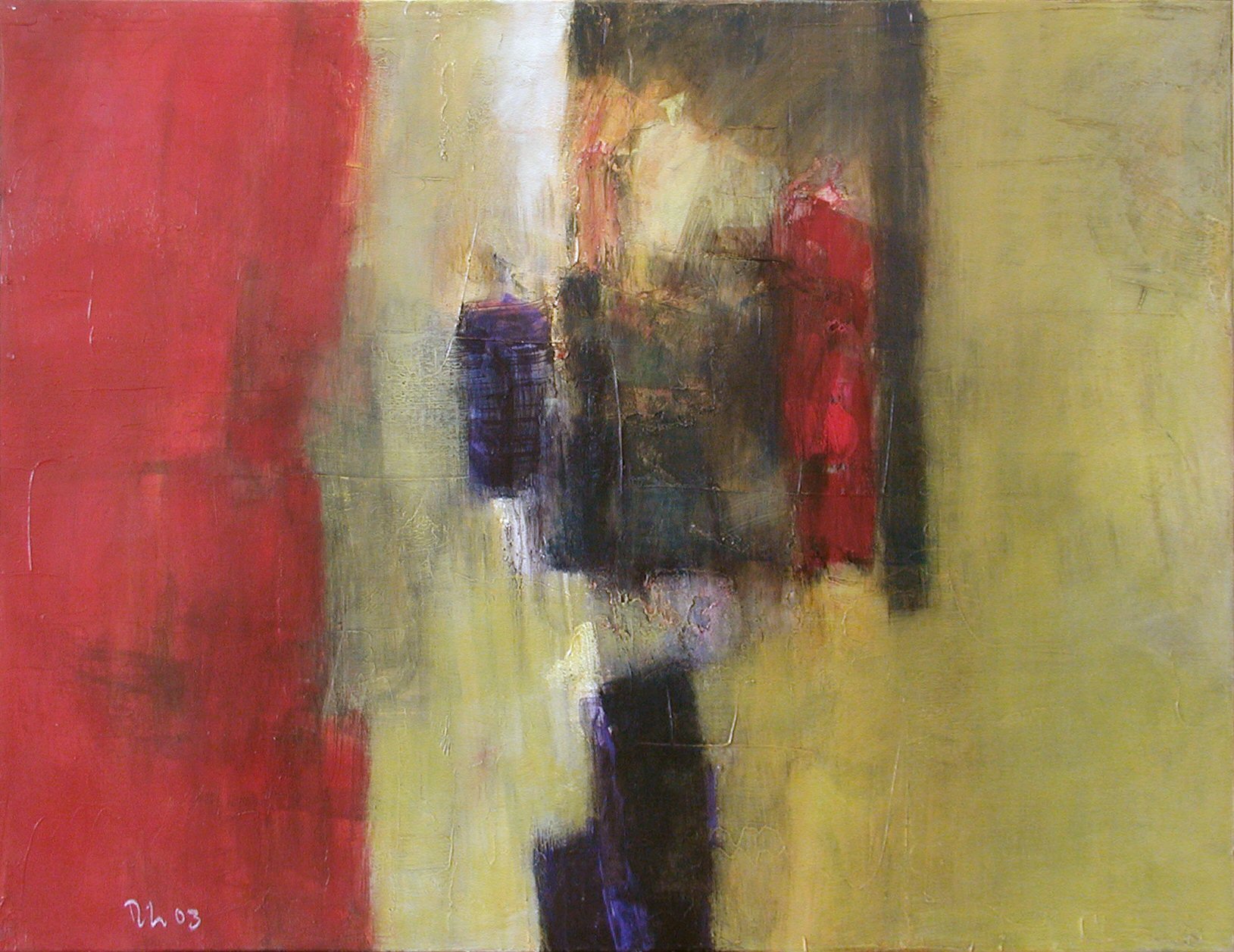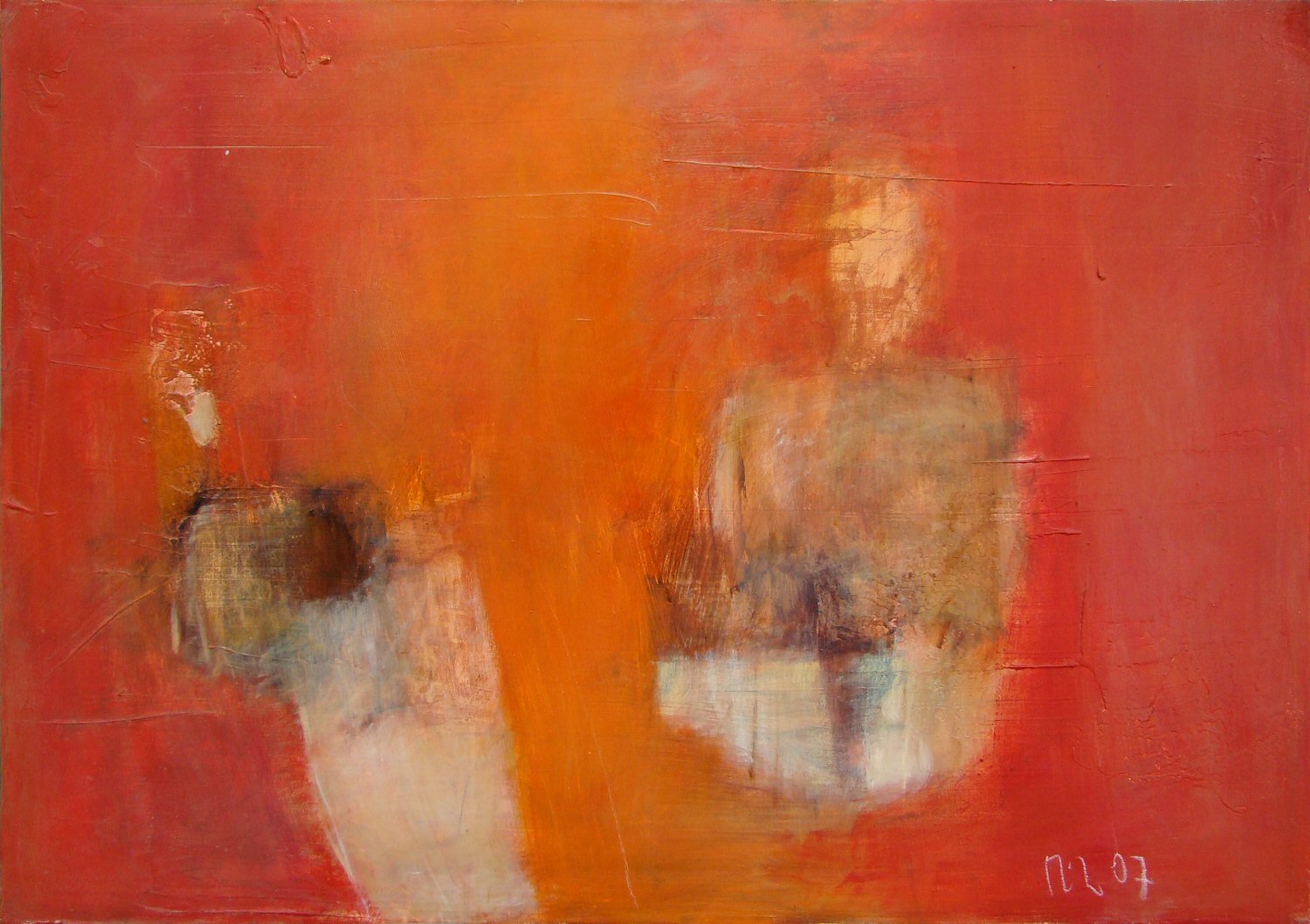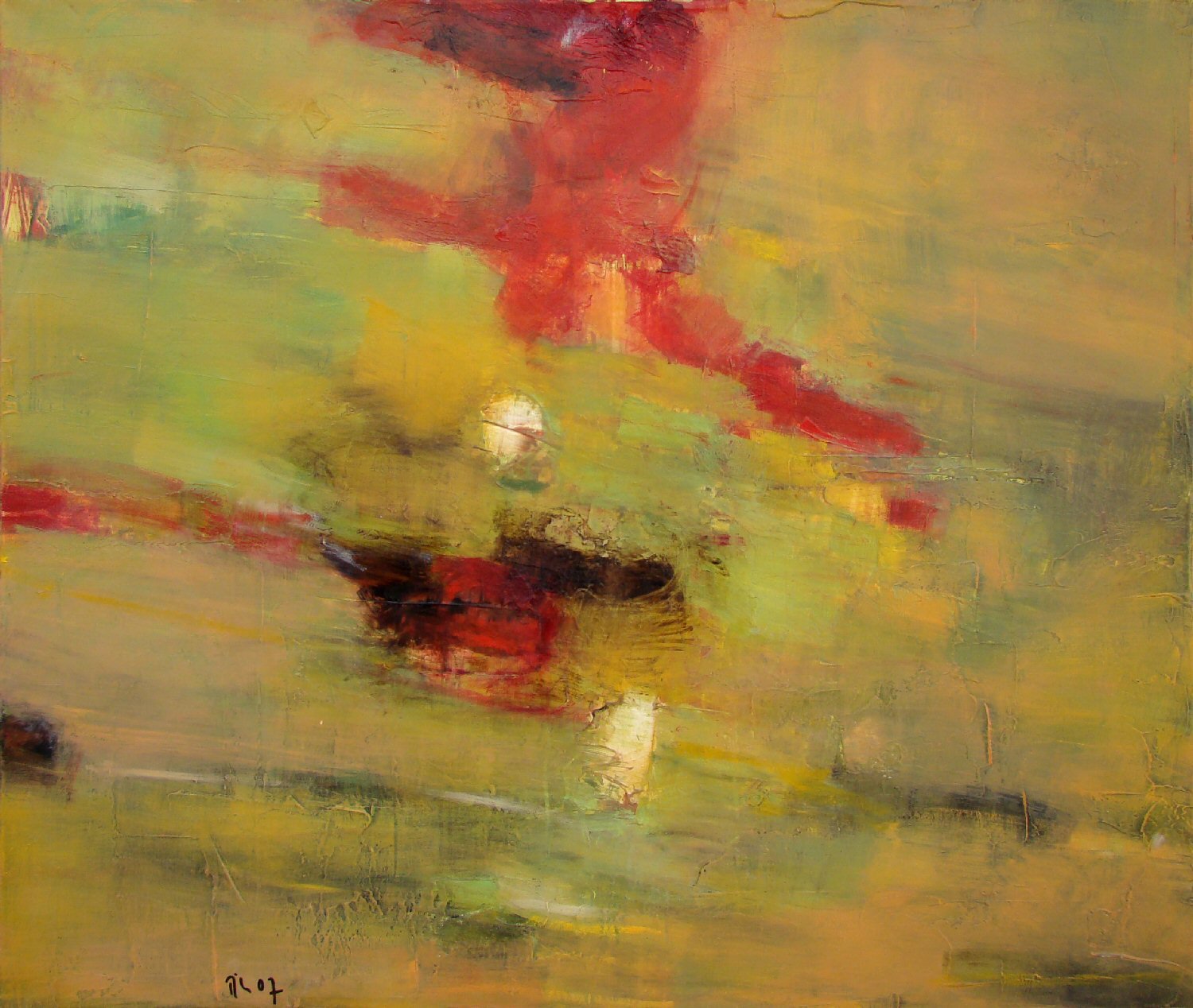Thomas Ritter
If one compares the works of Thomas Ritter over the past few years with those displayed in the first catalogue, one is initially struck by the increased frequency with which outline figures appear on his canvasses nowadays.
Thus, one may assume that the painter is seeking to examine the human form more intensively in his work. However, these “bipeds” do not – ever – have any feet; they exist as mere outlines of the upper half of the body, trailing off into simple lines. They are “invigorated” by their surroundings, whereas they would be irrelevant on their own.
It is the colors and shapes in the remainder of the canvas, which breathe life into them. What is behind these “insertions” into abstract elements? I already referred to this question in the introduction to the first catalogue and proposed a dissolution of the relationship between figure and abstraction in the work of Thomas Ritter: the rudimentary figure sketches can only exist in this abstract world of works which represents our everyday environment. This is the strength of Ritter’s canvasses: our habitual search for recognizable objects is satisfied – at first.
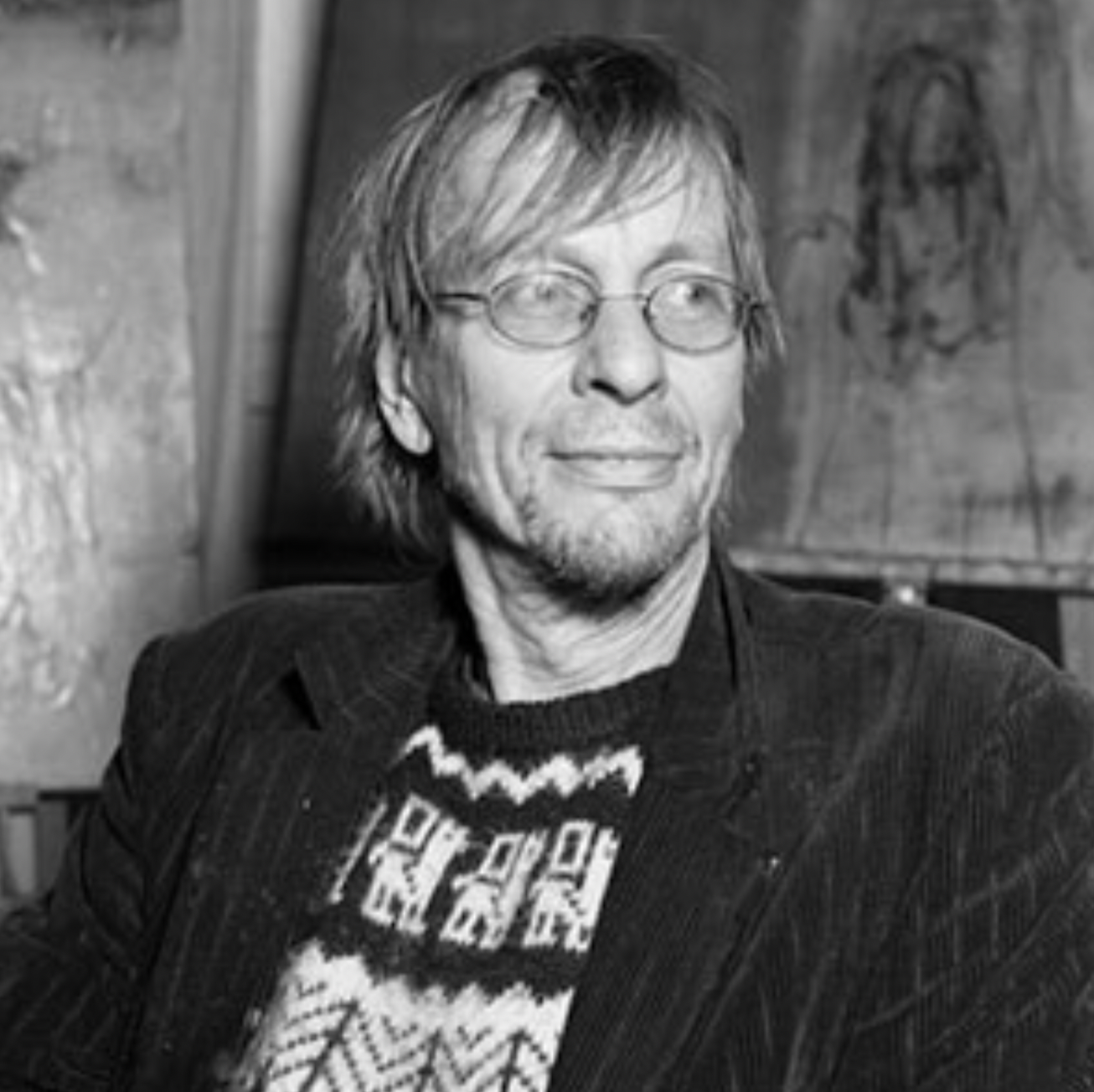
AVAILABLE WORKS
Below you can see examples of artwork, many of which have already sold. If you would like to see a list of available inventory, please fill out the form below and we will send you a list. If you already have a password to our inventory website my.hohmann.art you can see it there as well.
REQUEST AVAILABLE INVENTORYINTERESTED?
Are you interested in this artist, but not ready to move forward yet? Please click the button below and fill out the form. We will keep you informed about gallery activities and any news about this artist, including exhibitions and new arrivals. And we will be here when you're ready.
I'M INTERESTED!Available Works
Please fill out the form below and we will email you a link to a list of available works.
If you are looking for information to evaluate a work that you own, please visit the FAQ first.
I'm interested!
Please fill out the form below and we will add you to our gallery newsletter. You can unsubscribe or change your preferences at any time by clicking "Manage Preferences" at the bottom of any of our emails.
Landscape & People
Thomas Ritter often spends time in the countryside, as the retreat to nature gives him strength and challenges him to ponder. The impressions, colors, shapes and moods let him reflect upon his own feelings and how he expresses them in his paintings. The compositions of Ritter’s paintings have many layers; with fast drying acrylic colors and filler compound, the artist builds a base, a framework on the canvas. Over and over again, by blurring and by painting over, these structures are changed. “I put great value on these preparations, before the actual layering of colors even begins”, the artist explained. “I have to react quickly because acrylic colors dry fast. If I want to change something, I have to act immediately.” These layers and structures create a base that gives the paintings a strong spatial effect. The canvas thus prepared will then be worked step by step with slow drying oil colors.
Now the artist can take his time in applying colors. The various layers are clearly visible. The numerous nuances in color, the blurring and painting over, the working of color with a spatula – all are displayed before our eyes without having the effect of looking “constructed”. For example, an aggressive color like red blends into the painting’s composition without overwhelming it. When one looks closely, the entire spectrum of forms and shapes can be seen and analyzed. Again and again, the abstract works created reveal surprising discoveries. The references to nature can be interred, yet a whole new image has been created. Mondrian described the relationship between nature and abstraction as: “The more abstract nature is depicted, the more perceptible is the connection”.
This connection between nature and its transformation into a painting can be clearly felt in the works of Thomas Ritter. However, as if these abstract emotional connections were not sufficient, his paintings often include outlines of figures – sometimes well defined, sometimes blurred. For Ritter, man is at the center of nature. With the inclusion of these human figures, the artist softens the depiction of nature in purely abstract shapes. Thomas Ritter injects his own style without losing the connection to reality.
A painter must understand his surroundings; artistic creation is always an immediate reaction and a direct response to one’s surroundings. Ritter doesn’t want to lose the contact to his models in nature and in his surroundings, that’s why man appears again and again as an essential building block. In the works of Thomas Ritter there is a close connection between nature and its artistic transformation. His works are a testimony to his personal challenge, similar to what Max Beckmann demanded in a 1948 letter to a lady painter: “Again and again, each depiction of an impression of nature has to become an expression of your own joy or your own sorrow. That’s why the composition has to include the changes which then create art, the true abstraction.”
more about this artist
Biography
Thomas Ritter was born in Hoxter, Germany in 1955. Ritter’s complex abstract paintings are inspired by his love of nature. He often spends time in the countryside, where the various landscapes and their variables of time, geography and light lend distinct impressions of color, shape and mood. These impressions then become materialized through layered compositions. Grounds of acrylic and filler compound create a base on top of which oils are then added to educe lushness, blurred lines and density. Amongst these abstractions, Ritter often includes outlines of figures to place man as center of nature. During 1984 -1989 Ritter undertook a course of studies in free art under Professor Redeker at the Hanover College. He lectured on nude and figure drawing at the University of Hanover from 1989 –1997. He has exhibited widely throughout Europe. In Ritter’s work, the numerous nuances in color, the blurring and painting over, and the working of color with a spatula are all displayed before our eyes without having the effect of looking constructed. He lives and works in Hanover, Germany and Vastergodland, Sweden.
Like what you see?
Drop us a line or give us a call and we can take you through the process of purchasing. We have sold thousands of works to several thousand happy clients and collectors and we look forward to working with you!
send emailWe look forward to hearing from you!
Please let us know if you have any questions and we will get back to you as soon as we can.
